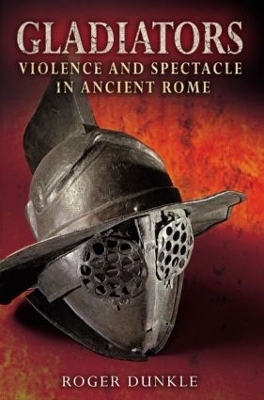
Gladiators
Violence and Spectacle in Ancient Rome
Seiten
2008
Longman (Verlag)
978-1-4058-0739-5 (ISBN)
Longman (Verlag)
978-1-4058-0739-5 (ISBN)
The games comprised gladiatorial fights, staged animal hunts (venationes) and the executions of convicted criminals and prisoners of war. Besides entertaining the crowd, the games delivered a powerful message of Roman power: as a reminder of the wars in which Rome had acquired its empire, the distant regions of its far-flung empire (from where they had obtained wild beasts for the venatio), and the inevitability of Roman justice for criminals and those foreigners who had dared to challenge the empire's authority. Though we might see these games as bloodthirsty, cruel and reprehensible condemning any alien culture out of hand for a sport that offends our sensibilities smacks of cultural chauvinism. Instead one should judge an ancient sport by the standards of its contemporary cultural context. This book offers a fascinating, and fair historical appraisal of gladiatorial combat, which will bring the games alive to the reader and help them see them through the eyes of the ancient Romans.
It will answer questions about gladiatorial combat such as: What were its origins? Why did it disappear? Who were gladiators? How did they become gladiators? What was there training like? How did the Romans view gladiators? How were gladiator shows produced and advertised? What were the different styles of gladiatorial fighting? Did gladiator matches have referees? Did every match end in the death of at least one gladiator? Were gladiator games mere entertainment or did they play a larger role in Roman society? What was their political significance?
It will answer questions about gladiatorial combat such as: What were its origins? Why did it disappear? Who were gladiators? How did they become gladiators? What was there training like? How did the Romans view gladiators? How were gladiator shows produced and advertised? What were the different styles of gladiatorial fighting? Did gladiator matches have referees? Did every match end in the death of at least one gladiator? Were gladiator games mere entertainment or did they play a larger role in Roman society? What was their political significance?
Before his retirement, Roger Dunkle was Professor of Classics at Brooklyn College, City University New York. His previous publications include 'Classical Origins of Western Culture' (Brooklyn University Press).
Preface 1. Cultural Context and Origins of Gladiator Combat 2. Recruitment and Training of Gladiators 3. The Munus in Action 4. Brief History of the Munus 5. Brief History of the Venatio 6. Roman Amphitheater and Colosseum 7. Gladiators in Film
| Erscheint lt. Verlag | 30.10.2008 |
|---|---|
| Verlagsort | London |
| Sprache | englisch |
| Maße | 156 x 234 mm |
| Gewicht | 694 g |
| Themenwelt | Sachbuch/Ratgeber ► Sport ► Kampfsport / Selbstverteidigung |
| Geschichte ► Allgemeine Geschichte ► Vor- und Frühgeschichte | |
| Geisteswissenschaften ► Geschichte ► Regional- / Ländergeschichte | |
| ISBN-10 | 1-4058-0739-3 / 1405807393 |
| ISBN-13 | 978-1-4058-0739-5 / 9781405807395 |
| Zustand | Neuware |
| Haben Sie eine Frage zum Produkt? |
Mehr entdecken
aus dem Bereich
aus dem Bereich
auf den Spuren der frühen Zivilisationen
Buch | Hardcover (2023)
C.H.Beck (Verlag)
20,00 €
Konzepte – Methoden – Theorien
Buch | Softcover (2024)
UTB (Verlag)
39,90 €
Was Pompeji über uns erzählt
Buch | Hardcover (2023)
Propyläen (Verlag)
32,00 €


